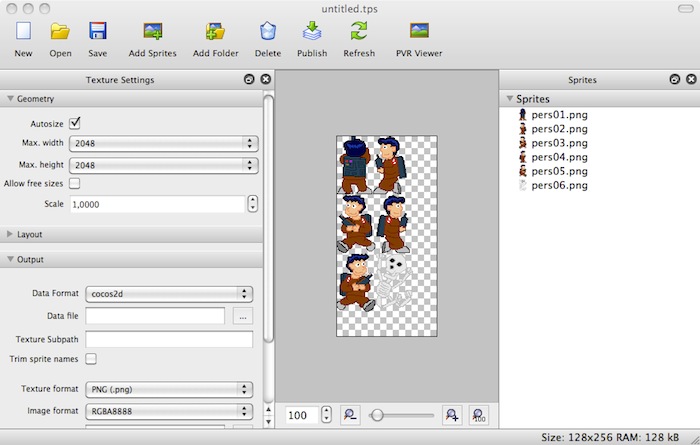

Given a directory, it recursively scans for image files. TexturePacker can pack all images for an application in one shot. Note that TexturePacker runs significantly faster with Java 1.7+, especially when packing hundreds of input images. Java -cp runnable-texturepacker.jar .texturepacker.TexturePacker inputDir The TexturePacker class is in the gdx-tools project.
Shoebox texturepacker skin#
If you are using Scene2d Skins, you probably already use Skin Composer and can use its user-friendly interface to add your textures to the Skin’s atlas. If you prefer to pack your textures using a GUI, you can use Texture Packer GUI. It also uses brute force, packing with numerous heuristics at various sizes and then choosing the most efficient result.

TexturePacker uses multiple packing algorithms but the most important is based on the maximal rectangles algorithm. It stores the locations of the smaller images so they are easily referenced by name in your application using the TextureAtlas class. libGDX has a TexturePacker class which is a command line application that packs many smaller images on to larger images. Binding the texture is relatively expensive, so it is ideal to store many smaller images on a larger image, bind the larger texture once, then draw portions of it many times. We’re gonna add a third one.In OpenGL, a texture is bound, some drawing is done, another texture is bound, more drawing is done, etc. You can see that two tasks have already been defined: makeand clean. bat file done, open up the tasks.json file in your project’s. Just alter the first part of the second line to point to your emulator executable. I am using Gens KMod which I’ve put in a gensk subfolder within the main SGDK folder. The second line depends on what emulator you’re using and where it is. If you’ve set up the environment variables as described in the SGDK tutorial, the first line should look the same for you. %GDK_WIN%\gensk\gens.exe %cd%/out/rom.bin %GDK_WIN%\bin\make -f %GDK_WIN%\makefile.gen The first will make the project, the second will load the rom in our emulator. Just call it anything you want, I named mine run.bat.

bat file using your favorite text editor. Luckily this is also possible in VSCode!įirst you need to create a. But there was one last thing I was missing: I had set up Code::Blocks to automatically load up my compiled rom in an emulator. When you open the project in VSCode now, you should be able to compile it via the Command Palette ( Ctrl+Shift+P) or directly ( Ctrl+Shift+B).vscode folder into your project directory. Change includePath to point to the inc folder of your SGDK installation (for example "includePath": ) Open the file c_cpp_properties.json with a text editor.Clone this git repo (or download/extract it as a.
Shoebox texturepacker install#
Download and install Visual Studio Code (also obvious).Download and install SGDK (obviously).However, since Visual Studio Code is cross-platform, you should be able to get this to work on other operating systems with some slight tweaks. Note: These instructions are meant for Windows. Luckily I found a rather easy way to set this up! Now VSCode of course “supports” development in SGDK considering it’s just a bunch of C files, but I wanted things like auto-complete and compilation via keyboard shortcuts. And secondly…I use VSCode for pretty much anything else coding-related, so it would be nice to also use it for SGDK stuff. Considering I’m pretty much poking around the SGDK API blindly, that wasn’t helpful. First of all, auto-complete didn’t really work. And Code::Blocks is great, but I still had two issues with it. As I mentioned in part 2 of Adventures in Mega Drive Coding I set up Code::Blocks as my IDE for Mega Drive development.


 0 kommentar(er)
0 kommentar(er)
